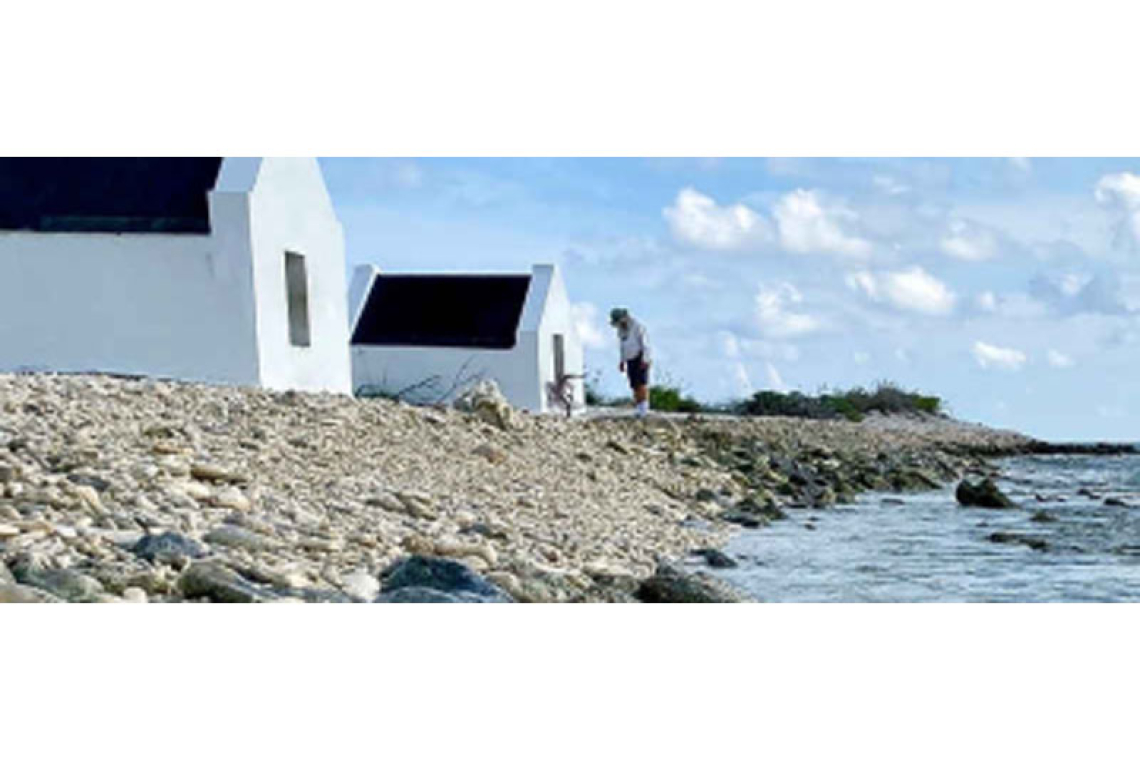An increase in sea levels could result in low-lying areas of Bonaire becoming flooded by 2050. (UNESCO photo)
BONAIRE--Under the orders of the Dutch Government and the Executive Council of Bonaire, quartermaster Ed Nijpels examined the best way to set up a “Climate Table” for Bonaire. Nijpels handed over his findings to Minister of Climate and Energy Rob Jetten, Acting Governor Nolly Oleana, and the cabinet of Commissioner Thielman. He advised setting up a single central platform for the climate strategy on Bonaire, where all relevant knowledge about climate mitigation, such as reducing greenhouse gases, and climate adaptation are united. Participants in the Climate Table must define an approach that results in a Climate Agreement for Bonaire.
The Dutch government and the public entity both welcomed this advice. The government in The Hague thanked Nijpels for the advisory report and said it will give a comprehensive response to the advisory report after the summer recess.
In the report called “It is never too late”, quartermaster Nijpels advises setting up a Bonaire climate round table with two objectives: to establish specific agreements about making Bonaire sustainable, and to make the island stronger and more resilient against current and future climate change.
The round table should be supervised by an independent chairman, and should bring together representatives of various government entities, main sectors and non-government organisations.
The Bonaire Climate Table would serve four purposes: formulate agreements to achieve a climate agreement, identify missing knowledge, encourage a public dialogue, and monitor progress.
In a more general sense, Nijpels recommends not to consider climate policy separately from the socio-economic challenges faced by the Caribbean Netherlands, and to draft a policy that is in keeping with the Caribbean context and policy objectives when it comes to restoration of nature and spatial planning.
As a small and low-lying island, Bonaire is extremely vulnerable to the negative impact of climate change, which includes flooding, heavy rainfall, extended periods of hot weather and deterioration and loss of coral reefs.
An increase in sea levels could result in low-lying and primarily uninhabited areas of Bonaire, such as “the Saliñas” becoming flooded by 2050. By 2150, built-up areas such as the capital Kralendijk and Belnem will also be at risk.
While the Caribbean Netherlands is not legally obligated to reduce greenhouse gas emissions, and because the Paris Climate Agreement and National Climate Law only relate to the European Netherlands, Bonaire has the ambition of playing a role in the prevention of climate change.
The Dutch government supports this ambition, and has cooperated with the public entity to ask Nijpels to examine the best way to set up the Bonaire Climate Table.
Saba and Statia
The flooding-related challenges faced by Saba and St. Eustatius are less significant than those faced by Bonaire, but changes in the climate will increase other risks, such as those of tropical storms.
While large amounts of sustainable electricity is available on both islands, and there are advanced plans to become 90% sustainable, the islands still face challenges.
On Statia, the biggest concerns relate to energy, water and large-scale erosion. On Saba, focus primarily lies on land and sea-based nature restoration and preservation, improving self-sufficiency and developing sustainable food production.
Considering the environment and the nature of the climate problem, as well as the small populations on Statia and Saba, Nijpels recommends setting up a Climate Agenda under the supervision of an independent expert, with support from the ministries in The Hague, and in consultation with the Executive Councils and public organisations on both islands.
One of the conclusions of the advisory report is that a number of prerequisites must be met to ensure a successful start. That is why the Dutch cabinet is working on a comprehensive response to the advisory report, which will be released after the summer recess. This response will involve addressing the role of the Climate Table’s chairman, the required capacity and support, and the proposed approach for Saba and Statia.







